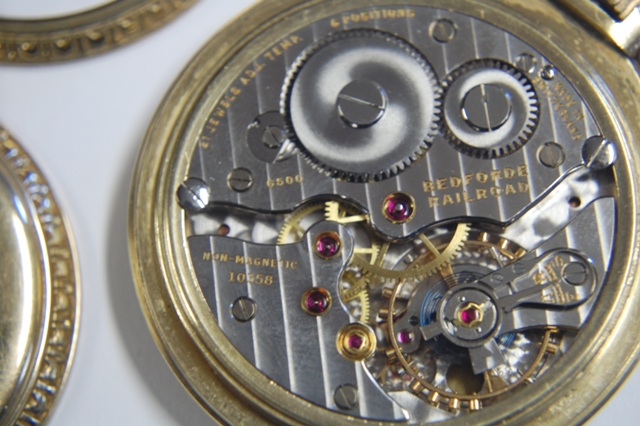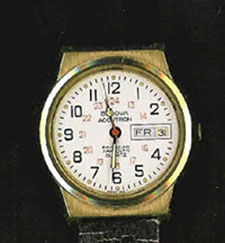
| WWT Shows | CLICK TO: Join and Support Internet Horology Club 185™ | IHC185™ Forums |

|
• Check Out Our... • • TWO Book Offer! • |
Welcome Aboard IHC185™  Internet Horology Club 185
Internet Horology Club 185  IHC185™ Discussion Site Main Page
IHC185™ Discussion Site Main Page  Horological Discussions, Questions and Answers
Horological Discussions, Questions and Answers  European Pocket Watch Forum
European Pocket Watch Forum  Bedforde Railroad questions
Bedforde Railroad questions
 Internet Horology Club 185
Internet Horology Club 185  IHC185™ Discussion Site Main Page
IHC185™ Discussion Site Main Page  Horological Discussions, Questions and Answers
Horological Discussions, Questions and Answers  European Pocket Watch Forum
European Pocket Watch Forum  Bedforde Railroad questions
Bedforde Railroad questionsGo  | New Topic  | Find-Or-Search  | Notify  | Tools  | Reply to Post  |  |
| IHC Member 1369 |
This will update a few much earlier posts but I thought I would revive the name since I now have one! What I know... The Bedforde Railroad pocket watch is a 16S 21J Swiss watch, grade/model 6500, apparently made for Goldsmith and Co in Toronto and was approved for use by the CNR, not CPR. What I can't confirm and would appreciate any info on is... Were these made by Unitas? Any manufacturing dates known? Any part of the train gold? Any other info that may be known? Thanks, Ralph | ||
|
| IHC Member 1369 |
here's the movement  | |||
|
| IHC Member 1418 Railroad Time Inspector |
Larry, Larry Buchan replied to a post Feb 17 2010 on Bedford watches. He did not say who produced them but they were approved by the CNR and some Mexican railrods in the 60's. He shows a nice example. Perhaps Larry whould be able to shed more light. Walter | |||
|
| IHC Member 163 |
I wonder why one Canadian road would approve its use in time service, but not the other. Regards! Mark | |||
|
| IHC Member 1418 Railroad Time Inspector |
Some more information. These watches were made for Goldsmith & Company Toronto by Untias movement 429 grade 6500 (some were called Elco).They were approved for the CNR but not the CPR. I have always been of the opinion that politics played a great part in what was approved and what was not. Walter | |||
|
| IHC Member 1369 |
Mark, I have wondered about that as well and until I can get some info about when these were manufactured it would be a guess. But, if these were produced in the mid to late 1950's or into the 1960's it might be that CP had approved what they saw as the final pocket watch for their use by that time. That being the Zenith Extra 56. If that were the case it would make sense that CP did not want to add another pw to the approved list. Just a guess. And the quality of this Bedforde seems quite similar to the Zenith. [I must remember to ask the fellow who ordered these Zeniths the next time I am speaking with him. He may have some knowledge about this.] It would also be interesting to know what relationship the Goldsmith company had with CN to get these approved. | |||
|
| Railway Historian IHC Life Member Site Moderator |
From my conversations with Peter Kushnir the last chief inspector of the the CPR Time Service Department, he told me that they had stricter guidelines than the CNR, I know one of one example a Bulova Accutron Railroad Approved Quartz Swiss 6945T that the CPR did not approve, and the CNR did, the watch had luminous 5 min. marks and hour and minute hands, the CPR were concerned that the luminous paint would deteriorate and flakes would get into the calendar and timekeeping mechanism. Another difference was the CNR chief inspector of time service in the 1960s approved dials that had 0 instead of 24 on their 24-hour type dials, Larry  | |||
|
| IHC Member 163 |
Interesting! Thanks, Larry! Regards! Mark | |||
|
According to a June 1999 ***** article on Swiss Standard Railroad watches the authors spoke with Mr. Peter Kushnir, who was with CP Rail between 1964 and 1989. During that time he held various positions including "Company Clockman" and "Time Service Technician". Included in the article is a 1978 internal correspondence from Mr. Kushnir listing the CP railway approved watches and also a list of 4 unapproved watches which he said "some of our men are in possession of". The first watch on the list is the 16 size BEDFORDE, Swiss made 21 jewel. Later in the article when discussing the Bedforde, he said that CP didn't approve the watch because it was based on an ebauche. Although it was acceptable as produced with its "high grade of adjustment", there was the fear that a lower grade part could be substituted which would not perform to specification. That explains why CP didn't approve it or at least why they said they didn't. It would be interesting to know what Canadian National thought about that reason, if they ever considered it. | ||||
|
| Railway Historian IHC Life Member Site Moderator |
Walter Colk said something interesting about politics being involved, I too believe this could have been a factor, you got to remember at the time this was taking place the Canadian Pacific Railway was a public company controlled by a board of directors and owned by shareholders. While on the other hand the Canadian National Railways was a conglomeration of bankrupt railways that tried to compete with the CPR and were taken over by the federal government after World War I, so they were what we call up here a Crown Corporation, much like Amtrak in the US, it is controlled by people appointed by the politicians in Ottawa. So I'm sure that lots of lobbying takes place in decision-making by the people who supply the railways. | |||
|
| Powered by Social Strata |
| Your request is being processed... |
|
©2002-2025 Internet Horology Club 185™ - Lindell V. Riddle President - All Rights Reserved Worldwide

